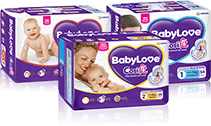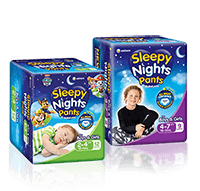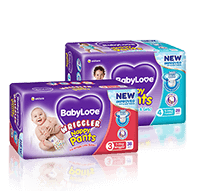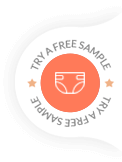Baby’s Teeth
Caring for your baby’s teeth is important although they will eventually lose them. Healthy teeth could prevent tooth decay that causes pain and discomfort to your baby…
How a baby’s teeth form:
- Known as teeth buds, baby’s teeth are formed in their gums while they are still in the womb and will set the foundation for their primary teeth, also known as milk teeth, baby teeth or deciduous teeth.
- Milk teeth will sprout on average when baby is around 6-10 months old (although some may be as early as 3 months and as late as 12 months); a set of 20 milk teeth will sprout progressively. This is also called teething.
- The milk teeth will eventually be replaced by a set of 32 permanent teeth when baby reaches 6 years old.
The table below displays a pattern on how your baby’s teeth will normally grow, some of the symptoms and how you as a parent can help your baby ease the teething pain and discomfort.
| Age (Months) | Teeth | Position | Symptoms | Helping Out |
| 6 – 12 | Incisors | Two central bottom & top. |
|
|
| 9 – 16 | 2 more incisors | Two more at the top & bottom. | ||
| 13 – 28 | First molar | Double teeth for chewing. | ||
| 16 – 23 | Canines | Point teeth – “fangs”. | ||
| 2 – 3 years | 2nd molar | Second set of double teeth at the back making it a total of 20 teeth. | ||
| 6 years till adult | New permanent teeth erupt | New set of permanent teeth will replace the milk teeth gradually and grow into a total of 32 teeth. |
|
Note: Seek medical attention if symptoms persist for a long period of time. |
Note:
Tooth eruption varies from child to child
Parents should not worry if their baby sprouts their teeth later or earlier as each baby’s growth is unique. Monitor your baby closely, and help baby ease the pain of teething by keeping their teeth clean and healthy.
First Care for Baby’s Teeth
Caring for your baby’s teeth is important although they will eventually lose them. Healthy teeth could prevent tooth decay that causes pain and discomfort to your baby. Let’s look at some helpful tips on how to care for your baby’s teeth.
| No. | Why you should care for your baby’s teeth | Things to avoid |
| 1. | Baby teeth serve to hold a place and space for permanent teeth. | Do not put your baby to bed with a bottle of milk or juice. Its sugar content can cause tooth decay. |
| 2. | Tooth decay and early loss can lead to permanent teeth shifting, causing orthodontic problems. |
|
| 3. | Promotes baby’s speech ability. | Do not dip pacifier in sugary substance. |
| 4. | Healthy teeth will boost self confidence. |
|
| 5. | Important for biting and chewing enabling baby to sample and consume nutritional food. | Try instilling a habit of drinking plain water before going bed. |
Brushing / Cleaning Baby’s Teeth
How do you clean your baby’s teeth? Some babies can be fussy and won’t cooperate to have their teeth cleaned. Here are some useful tips on how you can clean and keep your baby’s or toddler’s teeth strong and healthy.
| No. | Tips on brushing / cleaning baby’s teeth |
| 1. | Promote Habit:
|
| 2. | Brushing:
|
| 3. | Teaching a Toddler
|




